ART AS AN ASSET CLASS LEADERS
Observer’s 2023 The Business of Art Power List: Art as an Asset Class has listed Philip Hoffman, alongside Allan Schwartzman, as a leading authority on transforming art as an asset class. Patti Wong & Associate’s Daryl Wickstrom was also named by the Observer as one of the Most Influential People in the Art World Today.
BUILDING THE FINE ART GROUP
Hoffman has a history of making smart decisions for himself and for the collectors and investors he serves. At 27, Hoffman became the youngest C-level executive Christie’s had ever appointed and stayed with the auction giant for the next 12 years, becoming its deputy CEO of Europe before leaving it all behind to launch his own firm. His clients include high-net-worth families—30+ billionaires, as he has described them—plus private equity firms, hedge fund managers and real estate developers around the globe. “Smart people would build an art collection with an advisor who understands how to make money, and they can buy art that they love and make a lot of money at the same time,” Hoffman told Observer in 2019. Fast forward to today, and he’s still 100 percent focused on building The Fine Art Group into the number one partner for those looking to transact at the highest levels of the global art and collectibles markets. “Assembling the most experienced and talented team in the industry worldwide is a key priority,” he tells Observer. “We look forward to expanding our network and bringing a number of new, very experienced colleagues on board.”
Click here to read the full article in Observer.
Click here for the full article.
We are delighted to welcome Tad Smith, former CEO of Sotheby’s, to The Fine Art Group as Chairman of the Supervisory Board. Tad brings outstanding expertise and insight on a global scale, joining our growing network of the best talent in the field, which already includes Patti Wong and Allan Schwartzman.

His knowledge of the art industry, coupled with his considerable management experience, will be a tremendous benefit to our team as we continue to position The Fine Art Group as the best global partner for clients looking to transact at the highest levels of the market.
RELATED NEWS
- The Fine Art Group expands into Asia with investment in the new advisory
firm Patti Wong & Associates - Bringing together the complementary skills of The Fine Art Group and Schwartzman&
- The Fine Art Group Announces Australian Collaboration
BLUE CHIP OFF THE OLD BLOCK
While you might expect that increases in inflation and interest rates would deter art buyers, the Spring 2023 Australian auctions demonstrated that Blue Chip artworks are still commanding top prices. However, the art market appears to have entered a period of selective correction; the ball is now falling much more heavily in the buyer’s court.
After several years of rather wild bidding during the boredom of the pandemic, second and third-rate pictures are struggling – people are buying less into just the ‘brand’ of artists, but rather cherry-picking and dissecting their work.
New Auction Records for Australian Artists
The first auction to hit the block was Deutscher & Hackett’s strongly anticipated sale of Important Australian & International Art held in Melbourne, which saw several auction records set including that of an Australian Impressionist painting. The record was broken when their trophy lot, John Peter Russell’s Souvenir de Belle-Ile, sold for just under $4 million (including Buyer’s Premium), well over the $1.5-2 million estimate. This resounding new auction record (for the Australian artist who holds a unique place in Australian art history as a result of his close association with the European avant-garde and his acquaintance with prominent Impressionism and Post-Impressionism figures) was in part due to the work’s unique freshness to the market. The work had remained in the possession of the same family since 1897.

Souvenir de Belle-Ile
1897
Deutscher & Hackett
August 16th, 2023
Lot 23
Sold: $3,927,273
Although the Russell aided the auction’s total, making up 25% of the $15.44 million (including Buyer’s Premium), there were several other leading pieces, including works from both the Joan and Peter Clemenger Collection and the Krongold Collection. The striking Sydney Nolan piece entitled Early Morning Township made $2.7 million against its $1.5-2 million estimate.
The room witnessed further records broken when Del Kathryn Barton’s Of Pink Plantes sold for $527,727 (including Buyer’s Premium). Her previous record was held by We Will Ride, a similar-sized work that sold at Smith & Singer in November 2022 and made $466,364 (including Buyer’s Premium). While the chimeric goddess attained a new auction record, the sculptural work by Barton entitled More The Her went unsold at $70,000.
Further, unsold lots included John Brack’s Seated Nude With Screen from the Joan and Peter Clemenger Collection, which surprisingly failed to find a buyer at $420,000, significantly under its $500,000 – $700,000 estimate.
Although Deutscher & Hackett might blame the success of the Matilda’s on their 82% sale rate, it perhaps rather encapsulates the evolving preferences of collectors – quality over quantity.
2023 Auction Trends Continue at Smith & Singer
The trend continued at the Smith & Singer auction held the following week (and whose sale did not clash with the Women’s World Cup soccer).
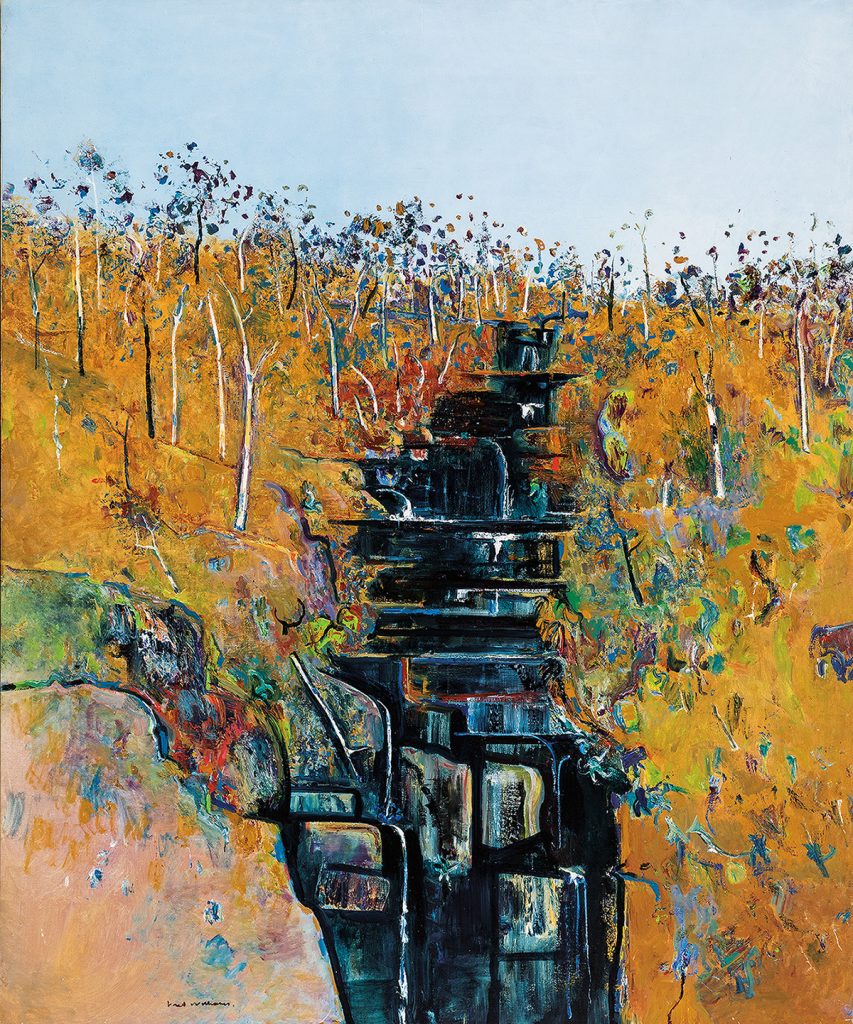
Mason’s Falls (1981)
Smith & Singer
August 23rd, 2023
Lot 23
Sold: $2,600,000
The cover lot, a stellar work by Fred Williams, Mason’s Falls, that was estimated at a bullish $2-3 million, saw another record set. The work, one of only six large-scale paintings from this series and also fresh to the auction market, saw a number of bidders both in the room and on the telephone chase the work. It finally sold to a dealer in the room who also purchased the Streetons, Gascoigne, Gruner, a Storrier, and two Whiteley works for $2.6 million hammer, thus achieving the second highest price for a work of art at auction in 2023.
However, the most spectacular result of the evening was the record set for the sculptural work by Joel Elenberg; in fact, it was a record set for an Australian sculpture at auction! The work was heavily fought over by two telephone bidders. The hammer finally fell at $925,000, over double its high estimate ($350,000 – $450,000). The work had previously sold at Sotheby’s Australia in 2010 for $192,000 (including Buyer’s Premium). Only 41 works have ever appeared at auction, and works by the artist continue to be extremely rare; thus, the desire to secure a work remains high.
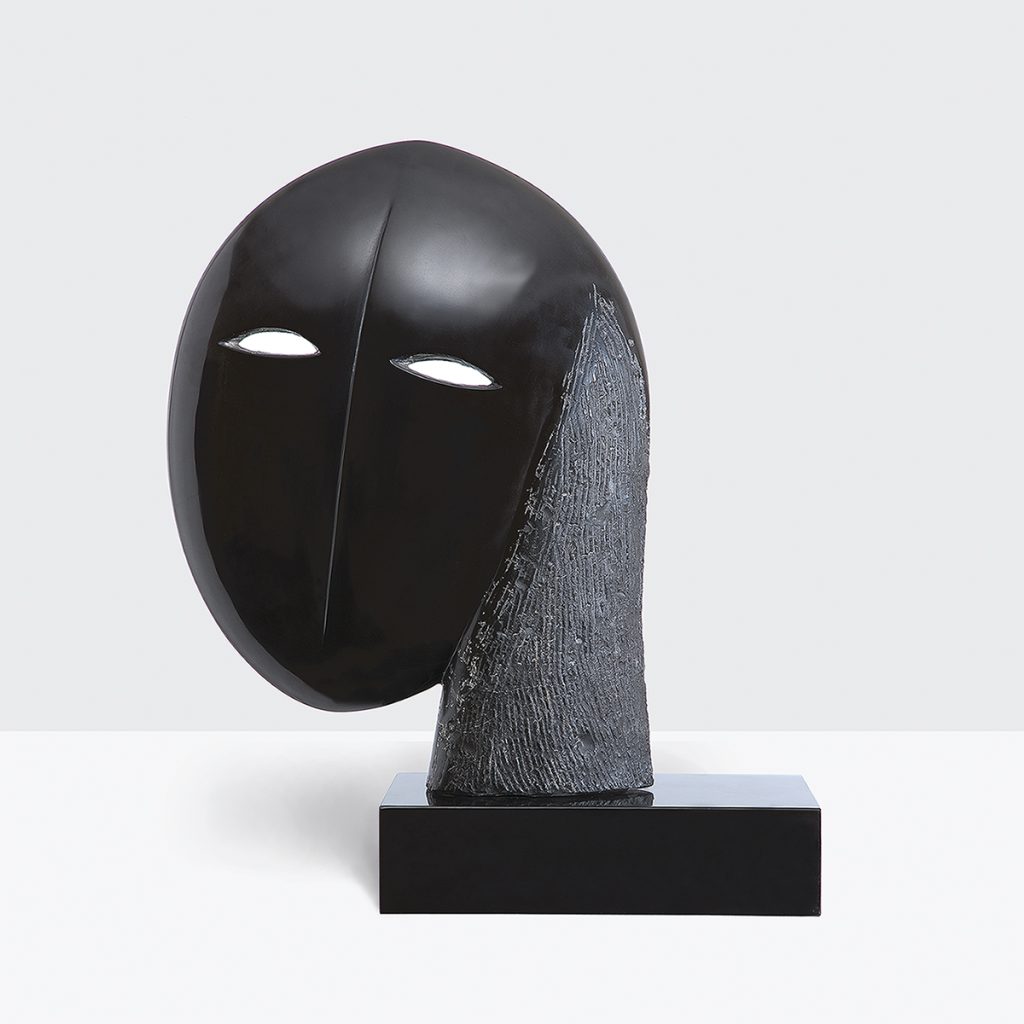
Mask1 (1978)
1948-1980
Smith & Singer
August 23rd, 2023
Lot 20
Sold: $925,00
One cannot forget the charming Isobel Rae, Femme Bretone a Jardin Étapeles, which also set a record at $420,000 hammer for a work by the little-known allusive artist.
The sale, however, also had its share of unsold works. The 1967 Charles Blackman, Dreaming Girl, failed to find a home at $110,000, alongside the Sidney Nolan Convict in Landscape, which passed at the same level. Further lower-value works also went unsold towards the end of the evening. The sale total was $11,837,000 ($14,527,228, including buyer’s premium), with an 85% sale rate.
Bonhams & Beyond
Following on the success of The Fred and Elinor Wrobel Collection: A Curated Salon that came to market in April, Bonhams conducted the second part of the sale, The Fred and Elinor Wrobel Collection: The Artist’s Eye. The sale focused on landscapes, scenes of the harbor, and beach life.
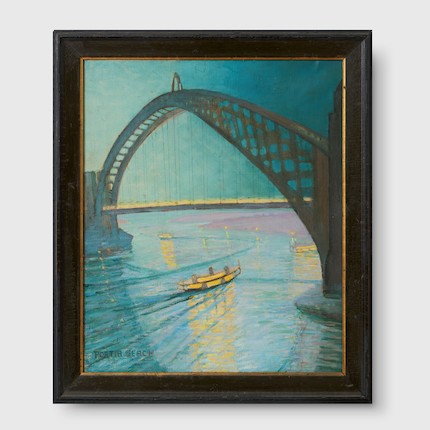
View of Sydney Harbor Bridge
1873-1959
Bonhams
August 9th, 2023
Lot 1
Sold: $54,120
The Wrobels’ astute eye, considered approach, and continuing support of women artists were noticeable in the results of the sale. The sale started with a bang, with the View of Sydney Harbour Bridge by Portia Stranston Geach selling for $54,120 (including Buyer’s Premium). This was ten times the low estimate of $5,000-$7,000. The two most important acquisitions in the collection, Grace Cossington Smith’s Thanksgiving Service and Hilda Rix Nicholas’ Children at Mount Annan, Holbrook, did well, with the former selling for $172,200 (including Buyer’s Premium) against an estimate of $100,000 – $180,000. And the Nicholas’, which was estimated at $60,000-$90,000, was chased all the way up to $159,900, including Buyer’s Premium). Both works were closely related to important paintings, held in the Queensland Art Gallery, Brisbane collection, and were fresh to market.
The Wrobels collection included works that were quintessentially part of the Australian psyche, and Sidney Nolan’s representation of Ned Kelly entitled Jerilderie encapsulated this completely. The work belonged to a small group of curtain studies created in response to his successful ‘second series’ Redfern exhibition in 1955. The work depicts Kelly, mounted on horseback, riding into Jerilderie, the location of the infamous bank heist in 1879. The small yet prized work was undoubtedly a highlight of the collection. The work was attractively estimated at $140,000-$180,000, enticing bidding all the way up to $239,850 (including Buyer’s Premium)
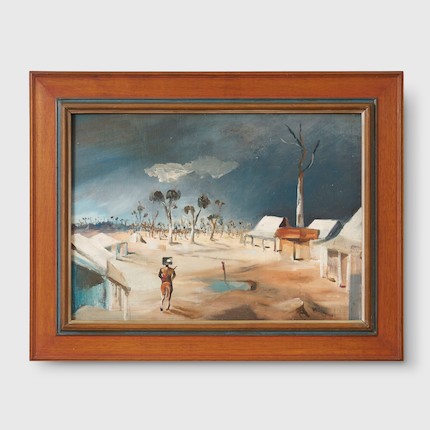
Jerilderie, 1956
1956
Bonhams
August 9th, 2023
Lot 57
Sold: $239,850
The sale was extremely well covered regarding the number of bidders, with only one work withdrawn and a 90% sale rate by lot.
The success of their single-owner sale did not, however, carry on into their sale of Important Australia Art, perhaps with auction fatigue hitting the room. The sale had a sell-through rate of 61% by lot, with a number of lots failing to find buyers, including the Howard Arkley that had been estimated at $100,000-$150,000. There were still several highlights to the sale, including works from the collection of the late Dr. & Mrs. Jackson. The sale commenced with the sale of the Still Life by Godfrey Miller, sold for $11,685 (including Buyer’s Premium) against an estimate of $2,500 – $3,500. The desire for Miller continued with Mountains selling for $29,520, again over double its low estimate.
Works by female artists continued to perform strongly, with the large abstract work by Aida Tomescu fetching $35,670 (including Buyer’s Premium) against an estimate of $18,000 – $25,000. And the stunning depictions of Coneflowers and Pears by Margaret Olley that once came from Philip Bacon, making double its low estimate ($60,000-$80,000) selling for $123,000).
Market Uncertainty has Advantages
Amid the sea of change, a window of opportunity may have emerged. Various economic factors may result in an increased focus on asset acquisition, particularly in the art world; however, savvy buyers may just be able to discover attractive price adjustments. Are we seeing a pause in the overheated sellers’ market? Time will tell.
As advisors to a vast number of collectors who are looking to invest in fine arts and acquire art as an asset, we feel that continuing to collect during periods of uncertainty presents definite advantages.
RELATED CONTENT
- The Fine Art Group Announces Australian Collaboration with Roger McIlroy Art Advisory
- Patti Wong: Asia’s Tastemaker
GLOBAL ART SERVICES POWERHOUSE
TFG has maintained an unrivaled track record across the art world for over two decades. TFG helps clients navigate all aspects of the art market, from providing assistance with collection strategies, acquisitions, appraisals, and selling works of art to art financing. This new collaboration with Roger McIlroy adds to the definition of TFG as an art industry innovator now available to meet new market demands in the Pacific region.
Download the full press release here.
Written by Isabel Della Salle, Art Advisory Fellow
Must-See End-of-Year Art Exhibitions of 2023
With 2023 coming to a close, The Fine Art Group’s team of art advisors put together a list of art exhibitions that merit your attention and are worth a visit before ringing in the new year. Ranging from Manet’s Olympia showing in the United States for the first time to brand new Kehinde Wiley work in Paris, there’s an exhibit for everyone, everywhere.
New York: MoMA
ED RUSCHA / NOW THEN
September 10, 2023 – January 13, 2024

In an exhibition complete with over 200 works, including paintings, drawings, prints, photographs, artist’s books, and film, MoMA explores Ruscha’s contributions to Post-War American Art. This exhibition highlights Ruscha’s inspiration from the drive between his hometown of Oklahoma City to Los Angeles along the infamous US Route 66 that informed many of the scenes he’s most known for.
New York: Whitney Museum of American Art
Ruth Asawa Through Line
September 16, 2023 – January 15, 2024
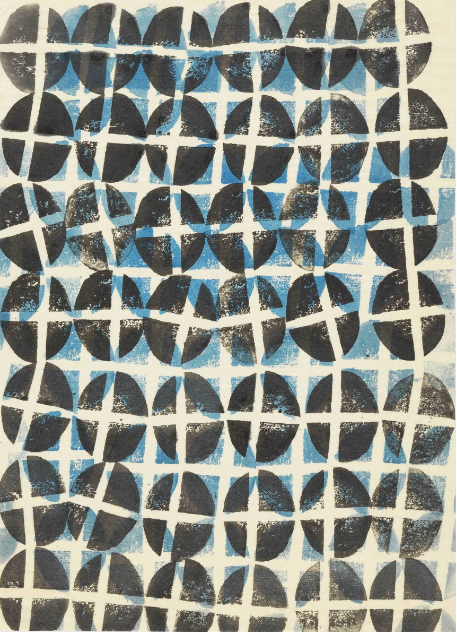
Though renowned for her abstract looped wire sculptures, drawing was essential to Ruth Asawa’s artistic practice and served as her center of gravity. Asawa continued this practice since she was young, having attended weekly calligraphy lessons as a child. In 1942, when her family was forced to leave their home in Southern California as part of the US government’s World War II isolation policies toward Japanese Americans, the teenage Asawa found salvation in the artists who taught and supported each other in the incarceration camps. In the years after that, Asawa maintained the belief that art has the power to make the world a better place. This exhibition highlights the important role that drawing played in Asawa’s personal life and its impact on the development of her sculptures.
New York: Metropolitan Museum of Art
Cecily Brown: Death and the Maid
April 4, 2023 – December 3, 2023
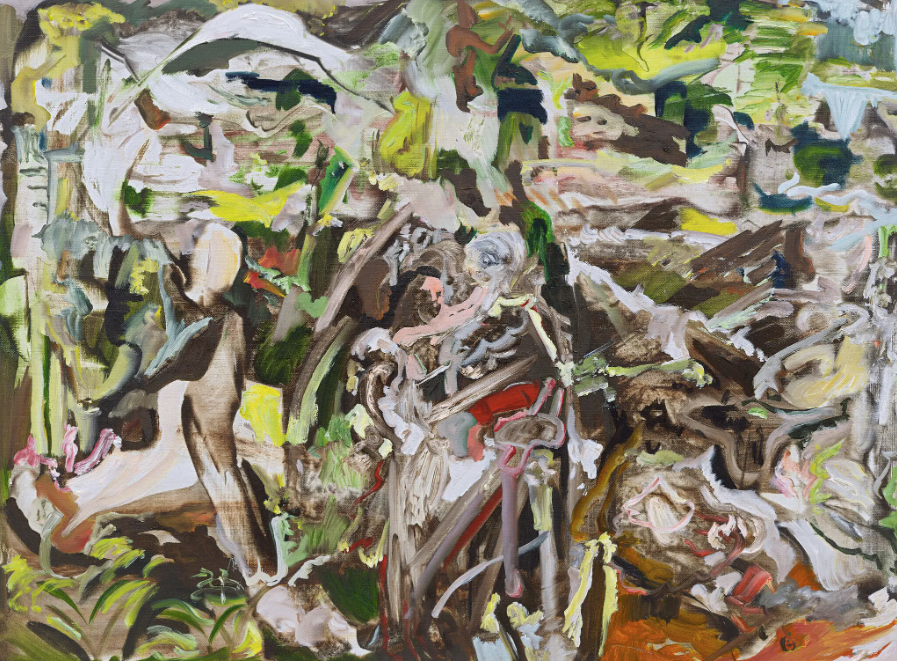
This exhibition, opened earlier this year, marks the first full-fledged museum survey of Brown’s work in New York since she made the city her home in the 1990s. Cecily Brown: Death and the Maid assembles a select group of some fifty paintings, drawings, sketchbooks, and monotypes from across her career to explore the intertwined themes of still life, memento mori, mirroring, and vanitas—symbolic depictions of human vanity or life’s brevity—that have propelled her dynamic and impactful practice for decades.
New York: Metropolitan Museum of Art
Manet/Degas
September 24, 2023 – January 7, 2024
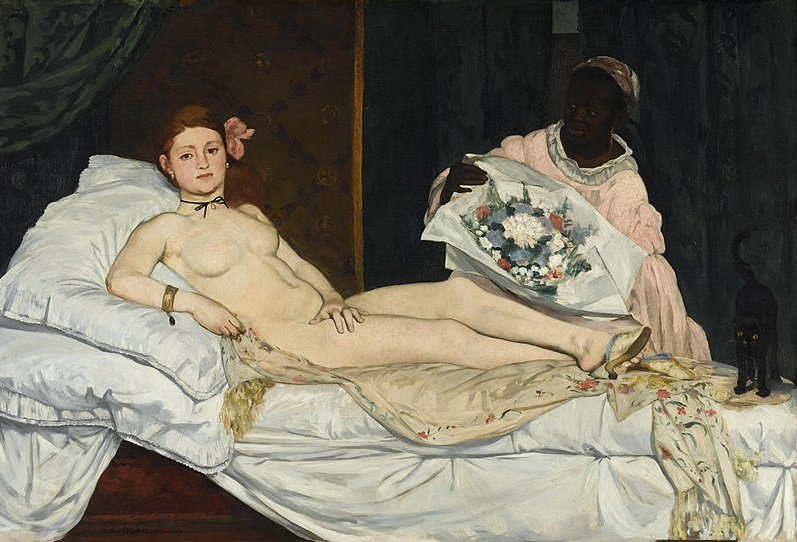
Manet/Degas, set to open in late September, will examine the dialogue between two of the most prolific and canonically important artists who helped shape modernist painting. Through 160 paintings and works on paper, the Metropolitan Museum of Art invites viewers to explore the relationship between Edouard Manet and Edgar Degas, who were at once friends and rivals. The works exhibited will include loans from the Musées d’Orsay et de l’Orangerie and will include Olympia, coming to the US for the first time, and works like Degas’ Family Portrait (The Bellelli Family).
New Haven: Yale University Art Gallery
Mickalene Thomas: Portrait of an Unlikely Space
September 8, 2023 – January 7, 2024

Co-organized by Mickalene Thomas, this exhibition features a selection of early American portraits of Black women, men, and children—from miniatures and daguerreotypes to silhouettes on paper and engravings in books—hanging on walls, standing within cases, and resting atop furniture. Alongside these small-scale objects, a group of artworks by Thomas and other contemporary artists in a wide array of media are situated within her signature homelike environment, which is adorned with period-specific textile patterns and other decorative elements. These contemporary works are placed in dialogue with the early American works in order to generate conversations about labor, home, and community in the past and present.
Chicago: Art Institute of Chicago
Remedios Varo: Science Fictions
July 29, 2023 – November 27, 2023
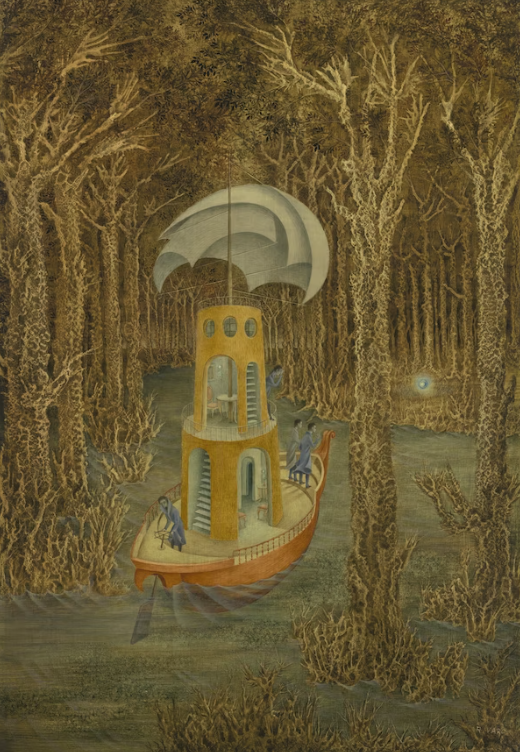
This Art Institute of Chicago exhibition is the first dedicated to the artist in the United States since 2000. It brings together more than 20 paintings Varo created in Mexico from 1955 until her death in 1963, along with additional materials from the artist’s archive—large-scale cartoons for paintings, notebooks, sketches, detailed studies, ephemera, and personal possessions. The exhibition’s subtitle, Science Fictions, alludes to the tensions and possibilities Varo brought together in her work as she searched to visualize hidden orders and unseen truths.
Los Angeles: Los Angeles County Museum of Art
Woven Histories: Textiles and Modern Abstraction
September 17, 2023 – January 21, 2024
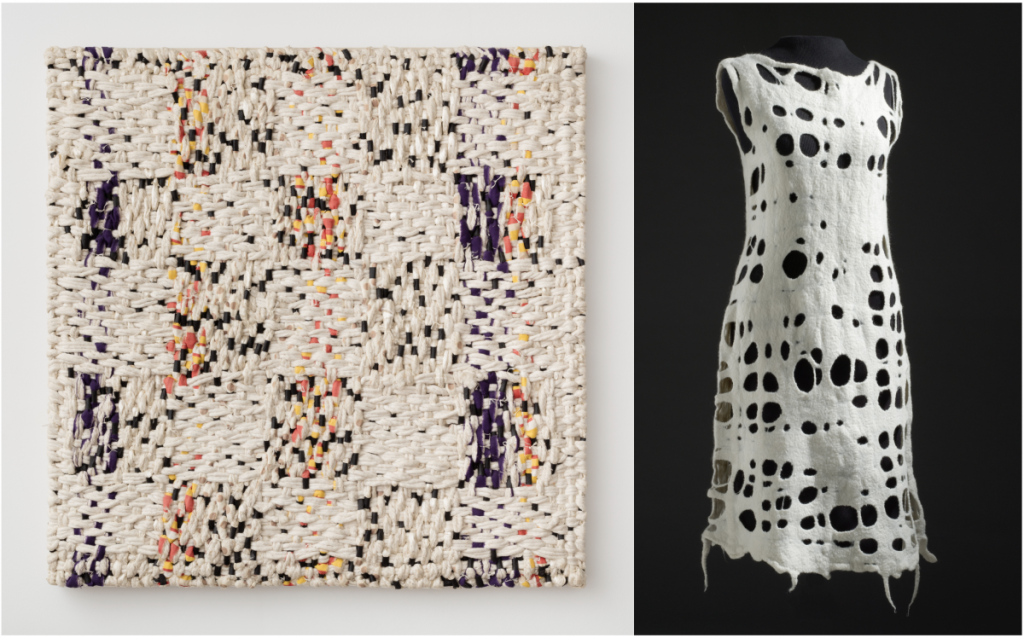
Andrea Zittel, ‘White Felted Dress #3’ from A-Z Fiber Form Uniforms, 2002, wool, hand-felted, Los Angeles County Museum of Art, purchased with funds provided by David and Susan Gersh. © Andrea Zittel, photo © Museum Associates/LACMA
Woven Histories: Textiles and Modern Abstraction foregrounds a robust if not over-looked strand in art history’s modernist narratives by tracing how, when, and why abstract art intersected with woven textiles (and such pre-loom technologies as basketry, knotting, and netting) over the past century. With over 150 works by an international and transhistorical roster of artists, this exhibition reveals how shifting relations among abstract art, fashion, design, and craft shaped recurrent aesthetic, cultural, and socio-political forces, as they, in turn, were impacted by modernist art forms.
London: Tate Britain
Sarah Lucas: Happy Gas
September 28, 2023 – January 14, 2024
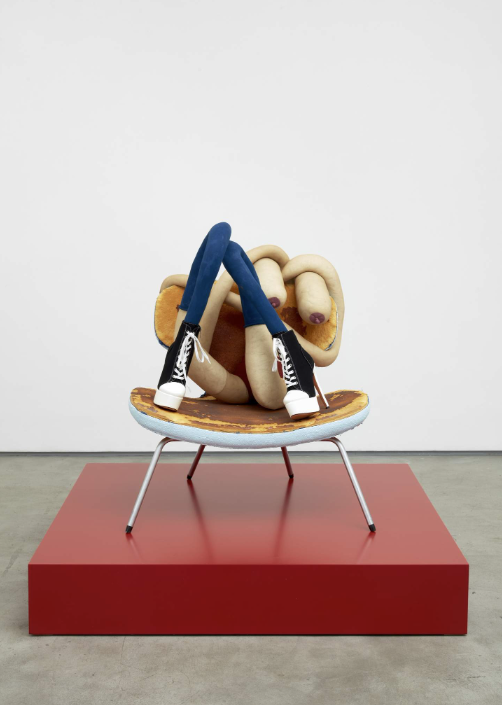
This exhibition brings together more than 75 works across four decades of Sarah Lucas’ career as a leading British contemporary artist. A highlight of the exhibition will be a large gallery of recent sculptures made between 2019 and 2023, including ten new works being displayed for the first time. These recent works show how Lucas has continued to rethink the themes that have defined her career, including the objectification of the female form and the anthropomorphic potential of everyday objects, while consistently bringing fresh perspectives to her practice.
London: Royal Academy of Art
Marina Abramović
September 23, 2023 – January 1, 2024

This major exhibition presents key moments from Abramović’s career through sculpture, video, installation, and performance. Works such as The Artist is Present will be strikingly re-staged through archive footage while others will be reperformed by the next generation of performance artists trained in the Marina Abramović method.
Paris: Musée du Quai Branly
Kehinde Wiley: Maze of Power
September 26, 2023 – January 14, 2024
This September, Kehinde Wiley unveils an exclusive series of portraits of African heads of state. Fascinated with representations of power and prestige within portraiture, Wiley has spent the last ten years meeting these leaders and combining the elements of royal and military portraiture in 17th – 18th and 19th-century Europe with each leader’s individual qualities to create a composition that illustrates each leader’s singular view of what it means to be a contemporary African leader. The portraits reflect the distinctive cultural elements of each state, revealing an individual’s identity through the dual prism of the artist and his model. These monumental paintings lay bare the contours of ego, the diversity of possibilities regarding taste and discernment, and the various communication strategies involved in building a personal and public image.
Our Services
Offering expert Advisory across sectors, our dedicated Advisory and Sales Agency teams combine strategic insight with transparent advice to guide our clients seamlessly through the market. We always welcome the opportunity to discuss our strategies and services in depth.
TFG INTERN PROGRAM
The Summer 2023 interns at The Fine Art Group were tasked with selecting their dream auction items from recent and upcoming sales, unrestricted by financial constraints. Their intriguing selections provide insight into their passions and enriching experiences at The Fine Art Group.
Jocelyn Hawkins, Art Advisory Fellow – New York, NY
Sotheby’s Institute of Art, 2024; VCUarts, 2019
MA, Art Business ; BA, Art History
ALEX KATZ (AMERICAN, B. 1927)
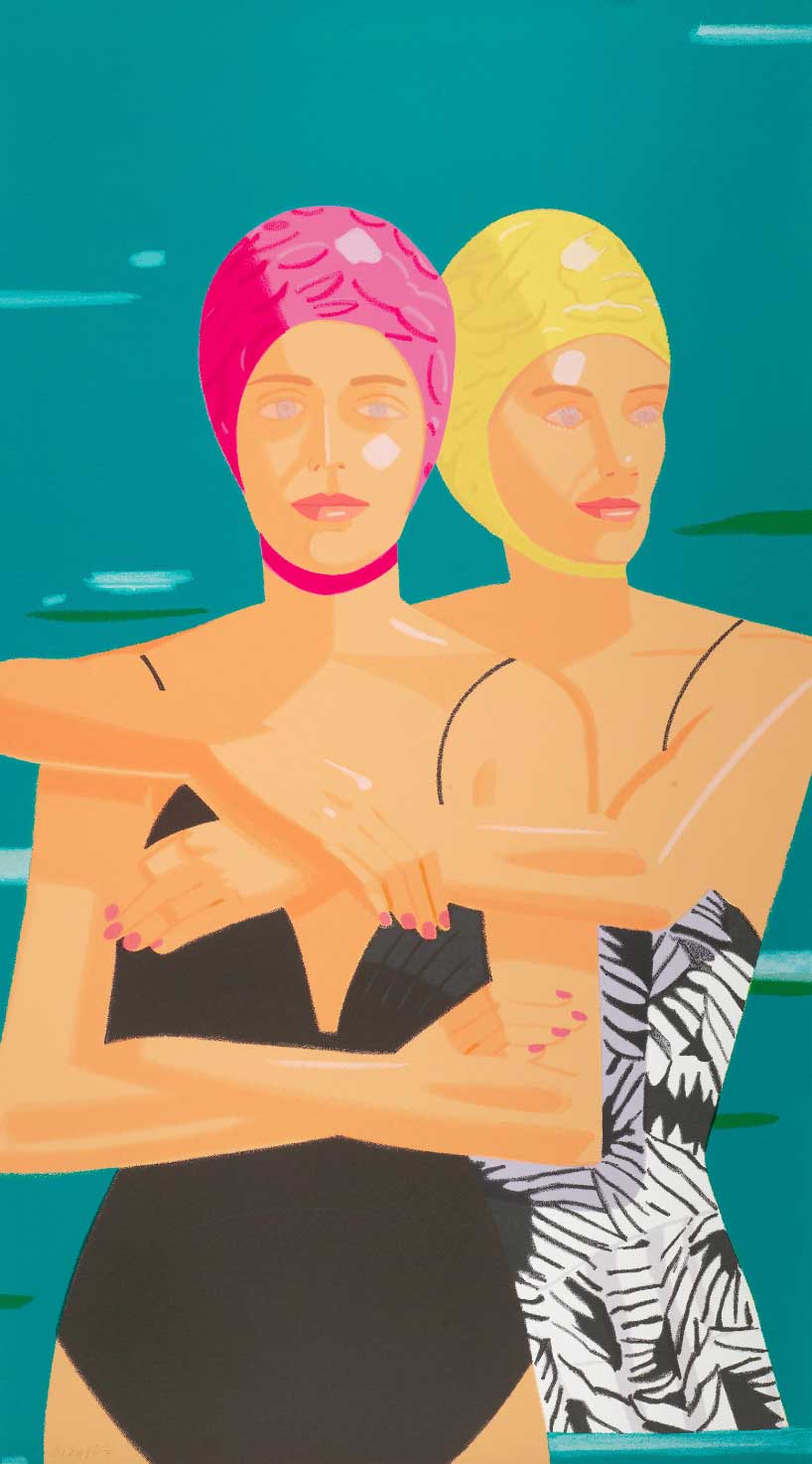
Eleuthera (1999)
Screenprint in colors on Rives paper
Signed in pencil and numbered ‘PP 1/5’ (a printer’s proof, aside from the edition of 75), co-published by the artist and Brand X Projects, Inc., New York, printed by Brand X Editions, Inc., New York, the full sheet.
48 x 26 3/4 in.
Bonhams
Prints & Multiples Summer Splash
4-14 August 2023
Lot 7
ACHIEVED: $25,600 inc. premium
An exceptional Katz print recently came to sale at Bonhams. Eleuthera depicts two very Katz-esque female figures in swim costumes with bold-colored caps. Behind them, the ocean is rendered in a simple plane of turquoise blue but still captures a glimmer of sunlight dancing on its surface. Some rays even catch the profile of his subjects’ faces, adorning them in the same flash that makes the water so beautiful. In his classic style, Katz depicts a magical moment. While this print appears very flat, he has captured the space’s and figures’ three-dimensionality.
Eleuthera refers to a small island in the Bahamas, only two miles wide. In this tightly framed composition, Katz transports viewers to that compact yet blissful environment. What makes this work even more special to me is its edition. This specific print is number “PP 1/5,” meaning it is the first of five Printer’s Proofs. In a previous sale, Christie’s noted that ten Artist’s Proofs were made, making the Printer’s Proofs even rarer. While I believe other collectors would focus on the paintings of Alex Katz more than his works on paper, I believe that purchasing a screen print of this uniqueness is a great way to build a Katz collection beyond one medium.
The last sale of an edition of Eleuthera achieved a hammer price of $11,000 at Christie’s, whereas the sale of the first Printer’s Proof reached $20,000 at Bonhams. These sales were less than a year apart with the Christie’s sale having been held in October of 2022 and the Bonhams sale having taken place just this past week in August of 2023. 2023 has been a mixed year for Katz screenprints, with some achieving beyond their estimate and some failing to even reach it. It is interesting to compare the different types of Katz prints that intrigue buyers.
Jiayi (Joyce) Liao, Arts Management Intern – Philadelphia, PA
Yale University, Class of 2025
Double Major in History of Art & Economics
HUANG YONGYU (CHINESE, 1924-2023)
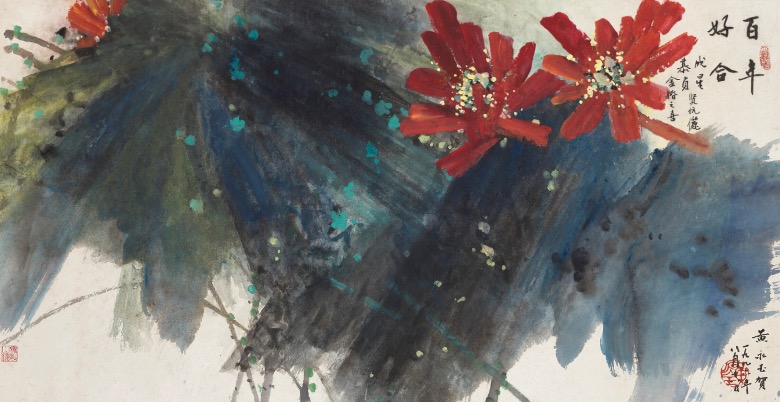
Lotus (1996)
Scroll, mounted and framed, ink and color on paper
Inscribed and signed, with three seals of the artist
Dated August 18, 1996
28 1/2 x 55 3/8 in.
Christie’s, Hong Kong
Summer Reverie: Chinese Paintings Online
15-29 August 2023
Lot 69
ESTIMATE: HKD 300,000 – 400,000
The artwork I chose was painted by Huang Yongyu, a self-taught contemporary Chinese artist known for his woodblock prints, ink-wash paintings, and stamp designs. Born in 1924 in Fenghuang, China, Huang never attended a regular school but studied literature and art independently. He often depicted wildlife, foliage, or human figures and sought to express childlike innocence. His works are in the collections of major institutions such as the Metropolitan Museum of Art in New York and the Asian Art Museum in San Francisco. Huang scheduled a centennial exhibition in 2024 but passed away on June 13, 2023.
I chose this painting because of its iconic subject, rare occasion, and reliable provenance. The lotus is one of Huang’s favorite subjects. This work represents his signature style of combining the painterly qualities of Abstract Expressionism with the Chinese tradition of “xieyi (painting ideas).” The composition draws viewers into a vast expanse of a harmonic fusion of ink, color, and water.
Despite its popular subject, this work has a unique context. According to the inscription, the piece – titled “bai nian hao he (may the blessed union last for one hundred years),” a common marriage blessing in Chinese – was painted as a gift to celebrate the 50th marriage anniversary of Chengxing and Madam Mu Zhen. ThelLotus is a symbol of marriage since “he (lotus)” is a homophone for “he (union).” The two lotus flowers positioned side by side in this painting probably represent the couple. The present owner of this work acquired it from the original recipients, which confirms its authenticity.
This will be the third time Christie’s presented “Summer Reverie: Chinese Paintings Online.” Huang’s works performed well in the previous two auctions, as exemplified by Lotus (1998) in 2022, which sold for HKD 1,386,000 (USD $176,598), 454% above its mid-estimate. Further, the artist’s recent death could make this sale a favorable time for acquisitions, as research shows that the value of works tends to drop in the year of the artist’s death and increase again afterward.
Comparable works in past auctions suggest the high potential value of this painting. Among 2,182 works by Huang Yongyu sold at auctions since 1988, 49 have similar subject matter, size, and medium as the one currently offered, with a record price of HKD 2,200,000 (USD 283,800) realized by Colorful Lotus (2002) at Christie’s Hong Kong in 2015. In 2023, two comparable works sold at China Guardian Auctions in Beijing outperformed expectations: Lotus (2004), sold in March, realized RMB 460,000 (USD 66,810), 360% over its mid-estimate; Lotus in Morning (2000), sold on June 14, a day after the artist’s death, realized RMB 862,500 (USD 120,666), over 50 times of its conservative estimate.
Kaylin Jury, Marketing Intern – Lititz, PA
Washington and Lee University, Class of 2024
Art History and Spanish Major | Cultural Heritage and Museum Studies Minor
BELKIS AYÓN (Cuban, 1967-1999)
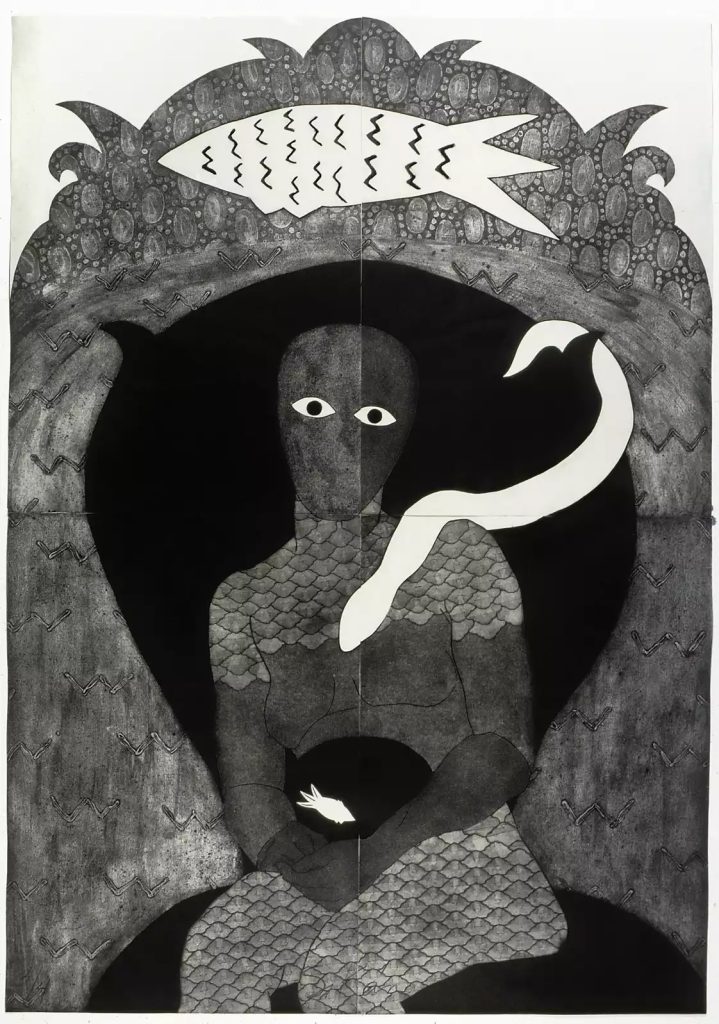
Sikán (1991)
Collograph
35 x 27 1/2 in.
Christie’s, New York
Latin American Art
28 September 2023
ESTIMATE: $40,000-$60,000
Belkis Ayón (Cuban, 1967-1999), a Cuban printmaker, is best known for her black-and-white depictions of Abakuá, an all-male, Afro-Cuban secret society. Ayón was enthralled with the group’s only female figure, Princess Sikán, who quickly became a central figure in the artist’s work. A 2019 Frieze article described these two women, artist and muse, as each other’s “alter ego[s].”
The deep textures, stark contrasts, and piercing, almond-shaped eyes seen in this depiction of Sikán are staples of Ayón’s style. The texture and depth Ayón achieves come from her use of collagraphy, a printmaking technique where ink is transferred using a collaged printing plate. One can see the joints between the individual prints in her 1991 Sikán, demonstrating the uniqueness of the artist’s technique. Combined with the work’s crowned design, these details make the piece a nontraditional and exceptional work from the Latin American sale.
As an influential female Cuban artist, Ayón has only recently begun to receive the attention I feel she deserves. Although high-achieving before she died in 1999, Ayon took flight in 2016 with the Fowler Museum’s exhibition of her first solo show. Since then, Sikán has been displayed in the Reina Sofia and El Museo del Barrio, demonstrating that it is a true museum-quality piece. Many other examples of Ayón’s work are in the permanent collections of the Museum of Contemporary Art, Los Angeles and, the Wilfredo Lam Center of Contemporary Art. I am excited to see this unique piece of Ayón’s work brought to public attention.
Similar pieces that sold above their high estimates in March 2023, like Untitled (Silkan with Goat) and ¿Arrepentida? (Repentant?), were placed in auctions focused on contemporary art. With Sikán coming to auction in a Latin American sale targeting collectors interested in Cuban art, I am interested to watch its performance.
Ran Peng, Art Marketing Intern – Pittsburgh, PA
Heinz College, Carnegie Mellon University, Class of 2024
Master of Arts Management
ROY LICHTENSTEIN (AMERICAN, 1923-1997)
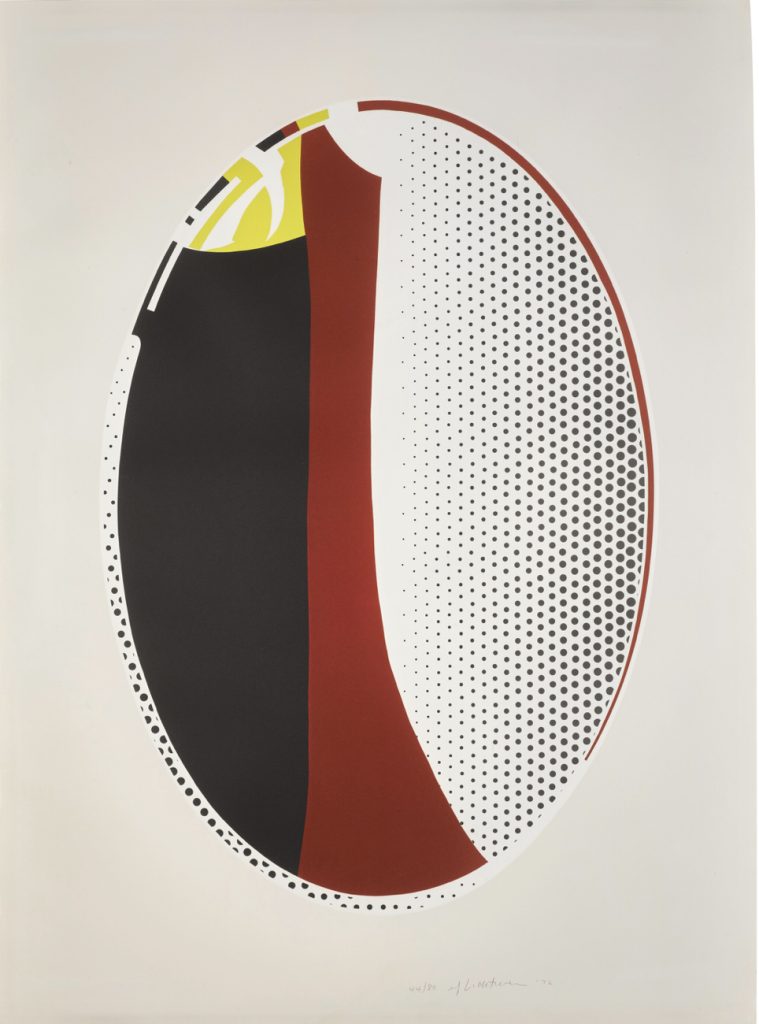
Mirror #6 (1972)
Lithograph and screenprint in colors on Special Arjomari paper
40 3/8 by 29 3/4 in.
Sotheby’s, London
Contemporary Discoveries
17 August 2023
Lot 26
ESTIMATE: GBP 8,000 – 12,000
ACHIEVED: GBP 12,700
As someone deeply interested in conceptual and Post-War and Contemporary art, I picked the lithograph and screenprint Mirror #6 by Roy Lichtenstein, in which he explored abstraction and discussed the concept of the “mirror” with his symbolic style. I really like the vibrant blocks of color and the conceptual discussion between the mirror’s formality and functionality.
Mirror #6 presents an oval shape in shades of dark red, black, and yellow with jagged lines and dots, creating a gradual transition from dense to light areas. The colors and dot clusters reveal the glass mirror’s edges while presenting its reflective nature. The oval mirror is placed at the center of the print and presented frontally without any reflected object. In this way, Lichtenstein separates the form and concept of the mirror from its functionality. With blocks of vibrant colors and dense dot clusters, Lichtenstein represents the reflection of light on the uneven surface of the mirror. This style helps viewers explore the conceptual difference between the mirror’s reflection and the mirror itself.
Throughout art history, mirrors have been used to convey the hidden complexities and dualities of the surface-level or outward presentation of self. In classic mythology, for example, mirrors served as a form of moralistic commentary on vanity. Lichtenstein’s work, however, challenges these traditional metaphors by shifting the focus from the reflected objects to the mirror itself. In this way, the artist poses a conceptual question to the viewer regarding the aesthetic comparison of an iconized object and its formal/physical features.
Lichtenstein revised his investigation of abstract aesthetics in his later career. Nevertheless, I believe the Mirror series is a solid showcase of his conceptual exploration, which he later continued in his Reflection and Interior series.
Various examples of similar Lichtenstein works have come to market in the last two years. For example, I found that a different edition of the same print, Mirror #6, and a print in the same series, Mirror #7, sold in the $10,000-$15,000 range. Since both previous pieces came to market in New York, I will be interested to see if London collectors take a similar interest in Lichtenstein’s Mirrors.
RELATED CONTENT
Disclaimer
Information in this report is compiled from a number of sources; The Fine Art Group does not make any representation or warranty, express or implied, as to its accuracy or completeness. The Fine Art Group shall not be liable for any errors or inaccuracies in this report or for any actions taken in reliance on information or opinion contained in this report. The Fine Art Group are under no obligation to update or keep current the information provided herein. Information in this report is provided solely for information and marketing purposes and is not to be construed as investment advice or a personal recommendation, nor as legal, tax, regulatory, accounting or any other specialist technical advice. Capital is at risk when buying or selling the types of assets discussed in the report, and any decision to do so is solely at the risk of the buyer or seller. Prior performance is not indicative of future results. Neither The Fine Art Group nor any of its directors, officers, employees, or agents accepts any liability for any loss or damage arising out of the use of all or any part of this document or reliance upon any information contained herein.
The report contains hyperlinks or references to third-party advertising and websites other than The Fine Art Group website. Any such hyperlinks or references are provided for your convenience only. We have no control over third-party advertising or websites and accept no legal responsibility for any content, material or information contained in them. The display of any hyperlink and reference to any third-party advertising or website does not mean that we endorse that third-party’s website, products, or services. Your use of a third-party site may be governed by the terms and conditions of that third-party site and is at your own risk.
The Fine Art Group offers hands-on internships for recent graduates and individuals with diverse backgrounds in the art world. This program provides first-hand experience in TFG’s appraisal, art advisory, agency, marketing, and business development divisions, in which the interns work directly with the corresponding advisors and teams.
Selected candidates must possess an exceptional work ethic, excellent time management skills, and a detail-oriented and professional demeanor, taking accountability for their tasks. Candidates should demonstrate an interest in art through work experience or studies and be motivated to excel in the gallery and auction market. Proficiency in Apple Mac OS, MS Office, Photoshop, and internal
INTERNSHIP POSITIONS
TFG internships last from 3-4 months and are offered as full-time positions.
Appraisal Management Intern
In-person only position – Philadelphia Metro Area
The Appraisal Management Intern will support the Appraisal and Advisory Departments by working with our team of experienced art appraisers. We seek a detail-oriented intern with a keen interest in and knowledge of art and antiques. The selected candidate should also have an outstanding work ethic, efficient time management, and be a team player.
Intern responsibilities include:
- Researching and cataloging antiques.
- Assisting with on-site client visits and appraisals.
- Formatting/editing documents and images for internal system tracking.
The intern will also collaborate with other departments to provide administrative and operational support.
Advisory Intern
Hybrid position allowed – New York City
The Advisory Intern will support the Advisory Department by working with our team of experienced art advisors. We seek a detail-oriented intern with a keen interest in and solid background in art history and antiques. The selected candidate should have an outstanding work ethic and time management skills.
This position is responsible for researching and cataloging antiques, updating client information in the CRM system, and maintaining 1stDibs accounts. The selected candidate is also responsible for creating client presentations, editing photos and documents, photographing items and artworks, and placing global exhibition consignments. They will also collaborate with other departments, including marketing and general operations, to provide administrative and operational support.
Art Marketing & Business Development Intern
Hybrid position allowed – East Coast
The Art Marketing Intern will support the Marketing Department and work closely with the Business Management and Operation departments. We seek a detail-oriented intern with an interdisciplinary background in art and marketing/management with a keen interest in art and antiques. The ideal candidate should have experience in design and marketing platforms such as Adobe Creative Suite, Mailchimp, or similar newsletter software, and WordPress. They should also have an outstanding work ethic, efficient time management, and be collaborative.
The Art Marketing Intern will analyze marketing data and produce reports, research digital and social media marketing keywords, and maintain websites and mailing lists. The Marketing Intern is also responsible for social media graphics, creative designs in Adobe Creative Suite, and some minor video editing. They will collaborate with the Advisory and Appraisal teams and general operations to provide administrative and operational support.
Read more about the open internships on our careers page. Please email your resume and cover letter to jobs@fineartgroup.com. Currently, we are not accepting phone calls about available positions.
Managing a growing collection can prove to be a daunting task for even the most seasoned collector. “How do I keep track of my purchases? How do I coordinate a museum loan or exhibition? When should I get an appraisal? How do I find a conservator that fits my needs?” As a Collections and Inventory Associate, I find the answers to these questions and much more. Working with The Fine Art Group’s global team of specialists, we create a bespoke plan for each collection and manage every object with the utmost care.
SERIOUS COLLECTORS NEED PROFESSIONAL COLLECTION & INVENTORY MANAGEMENT
WAYS THE FINE ART GROUP CAN SUPPORT IMPORTANT COLLECTIONS
- Inventory Management
Organizing and maintaining a comprehensive inventory of the client’s collection, including detailed records of each object, its provenance, condition reports, and relevant documentation. Our team will enter all documents into a collections database accessible to the client, their representatives, and The Fine Art Group.
- Appraisals & Valuations
Coordinating regular appraisals and valuations to provide clients with up-to-date information on the value of their collections.
- Logistical Oversight
Managing the logistics involved in handling and transporting artwork, including coordination of packing, shipping, and installation, ensuring proper care and adherence to international best practices.
- Disaster Planning
Implementing measures to protect the collection from potential risks such as natural disasters, fire, theft, or damage and developing emergency response plans, and coordinating with relevant experts for conservation and restoration in case of an incident.
- Museum Loan Advice
Providing guidance and assistance in navigating the process of lending artworks to museums and institutions, managing the logistics, insurance requirements, and legal considerations involved in loan agreements.
- Security Consulting
Advising on what protections a collection requires when on display, in storage, or during transportation and assisting in acquiring needed services.
- Philanthropic Strategy
Assisting clients in leveraging their collection for philanthropic purposes, offering guidance on charitable donations, art-related events, and collaborations with cultural institutions or nonprofit organizations.
- Exhibition Strategy
Working with our specialists to develop strategies and recommendations for exhibiting collections, including curatorial advice, display techniques, and exhibition planning to maximize the collection’s visibility and impact.
- Introductions to Vetted Industry Experts
Liaising clients with experts related to subjects such as tax planning, conservation, restoration, academic researchers, and scholars.
- Art Finance
Supporting through TFG’s Art Finance department for temporary finance for further collection development.
RELATED ARTICLES
- New Public Sculpture for Guangzhou, China
- The Secrets to Maintaining Large Collections
- The Fine Art Group’s Art-Secured Financing Solutions Continue to Meet Increasing Client Demand
OUR SERVICES
The Collections Management division at The Fine Art Group, represented by Luke Jacobs as the Collections & Inventory Services Associate for the Americas, aims to provide comprehensive and customized solutions to support clients in managing their collections effectively.
Selling your collection of art, jewelry, and other valuable assets can be a significant financial transaction. Therefore, it is crucial to understand the different options available to maximize your financial result.
It can also be an emotionally fraught process where the seller would benefit from the outside perspective of an art advisor looking out for the client’s best interest. There are various factors, from finding the right sales venue to getting the best price for your pieces, to consider. With knowledge, careful planning, and expert advice, you can ensure that you get the best possible financial result from selling your prized collection.
Join us to watch Kerry-Lee Jeffery, Colleen Boyle, Anita Heriot, and Kate Waterhouse discuss ways to maximize return of investment when selling collections of art, jewelry, wine, and other valuable collectibles.
DATE
- August 17th, 2023 – 1PM EST/ 10AM PST
LENGTH
- 30 to 45 minutes
FORMAT
- Zoom webinar
RELATED CONTENT
- Selling Jewelry & Watch Collections
- 10 Reasons to Work with an Advisor for a Successful Sales Process
- Visit The Fine Art Group’s Webinar Library
OUR SALES AGENCY SERVICES
The Fine Art Group’s dedicated Agency team can add significant value through seamless sales management, financial reporting and marketing optimization.
We take care of every detail of the sale process, from initial valuation all the way through to post-sale reporting and analysis, ensuring that the client communication and involvement is tailored throughout.
See our Sales Agency Case Studies to learn more about our services.
MAJOR WEATHER EVENTS AND YOUR VALUABLES
El Niño 2023 is here, according to the US National Weather Service. While this natural weather phenomenon could make the Atlantic hurricane season below average, that doesn’t mean you have nothing to worry about. The United States is experiencing record heat waves, flooding, and forest fires. El Niño could cause further significant weather events in the winter, bringing heavy precipitation to Southern California and the US Gulf states (Texas, Louisiana, Mississippi, Alabama, and Florida). That translates to storms, flooding, and in California, mudslides.
YOU HAVE TIME TO PREPARE IF YOU ACT NOW

Major weather events like hurricanes, floods, and wildfires can pose significant risks to your art and valuable possessions. Ensuring they are adequately insured and properly documented is crucial in safeguarding your investments.
We highly recommend calling your insurance broker to verify insurance coverage for all tangible assets. Determine exactly what insurance you have, especially flood insurance. Most property damage caused by weather events results from strong winds, heavy rainfall, and storm surges.
HOW TO REDUCE RISK & LOSS FROM MAJOR WEATHER EVENTS
STEPS TO TAKE BEFORE NATURAL DISASTERS
- UNDERSTAND THAT IT CAN HAPPEN TO YOU
With the escalated risk of natural disasters in recent years, managing risk to a collection has become a top concern for many collectors in high-risk areas. In addition to threats such as wildfires, hurricanes, and tornadoes, collectors must also prepare for unexpected events like a pipe burst or an electrical fire. In these unfortunate circumstances, unbeknownst to most, the owner is responsible for establishing their belongings’ value and comprehensive inventory. Therefore, proper inventory management and up-to-date appraisals are the crucial first step to prepare for the unexpected.
- VERIFY YOUR INSURANCE COVERAGE
Discuss insurance coverage with your broker. Review your policy for costly gaps in coverage.
If moving any fine art, verify that your collection is insured during transit. Some insurance companies have a waiting period before activating policy changes, so plan ahead.
Consider obtaining specialized coverage, such as fine art insurance or additional riders, to ensure comprehensive protection. Evaluate factors like coverage limits, deductibles, exclusions, and policy terms to guarantee sufficient financial reimbursement in case of damage or loss. - DOCUMENT YOUR ART, JEWELRY & OTHER VALUABLES
What do you have? Where is it? What did you pay for it? Do you have a recent Insurance Appraisal?
Update your inventory with photographs and copies of your receipts. Outdated appraisals and incomplete inventories can leave a collector scrambling to piece together information and significantly underinsured. With the burden of proof ultimately falling into the owner’s lap, it is clear why all successful asset evacuation plans must begin with inventory management and understanding your collectibles’ retail replacement (insurance) value. The Fine Art Group appraisal and collection management team will work with you to conduct a complete inventory audit and ensure that the insurance values are current. - HAVE A PLAN TO RELOCATE YOUR TANGIBLE ASSETS
Establish a plan to relocate valuables. Select a reputable fine art shipper to move valuables to a predetermined secondary location out of the path of the storm, preferably a vetted art storage facility. The Fine Art Group can assist clients in preparing evacuation plans ahead of extreme weather events.
For clients in states where insurance companies are pulling out, evacuation plans are even more crucial to safeguarding their assets. - THE AFTERMATH: DAMAGE & LOSS
In the event of damage or total loss to personal property, a Damage & Loss appraisal can be conducted. The Fine Art Group’s Damage & Loss Appraisals include:
– Retail replacement value (RRV) before and after damage
– Condition Analysis
– Conservator recommendations and cost quotes
– Diminution in value due to the damage and subsequent restoration
– In the case of a total loss, our in-house advisors will assist in replacing the object
FURTHER INFORMATION
- Watch Art, Cars & Collectibles: How to Mitigate Risk Before Disaster Hits
- Read more about how climate change affects art and how collectors protect their investments.
- Protecting Your Valuables From Loss
OUR SERVICES
Understanding value is the cornerstone to effectively managing a collection – and at The Fine Art Group, this understanding enables us to work as trusted fiduciaries for our clients and their objects. We are experienced in providing appraisals for various purposes and are specialists in unique and complicated appraisal scenarios.
8 Ways The Fine Art Group Can Assist Clients Selling Luxury Wearables
THE JEWELRY AGENCY PROCESS
- What do you have and where is it?
All families have jewelry and watches, whether we realize it or not. Typically, a family has jewelry in the family vault, and the age-old adage applies: ‘Out of sight, out of mind.’ My own family is guilty of this.
Your grandmother’s natural saltwater pearl necklace likely resides in the vault with grandfather’s Patek Philippe pocket watch and perhaps a colored gemstone of important origin or even a few gold coins. Ask questions about the family legacy and better understand the collective priorities. - Are you sure you want to sell?
The first question should be whether the piece(es) will continue to be worn. If the family members feel they will be wearing and enjoying the articles, please let us know, and The Fine Art Group will be happy to discuss the process of a retail replacement valuation (otherwise known as an insurance valuation).
However, if family members are not interested in keeping and wearing the pieces, we highly recommend discussing the works with our teams and obtaining a better market overview. We can discuss which ends of the market have the most traction with buyers on the secondary market (for example, auction market or private sale through The Fine Art Group). - How do you know what auction house is appropriate for your assets?
I genuinely enjoy counseling our clients through the sale process. We begin by finding the right auction house. Not all auction houses are created equal, and, most importantly, the big two (Sotheby’s and Christie’s) might not always be the most appropriate fit for the piece or collection.
Our team will explore the options with you, finding the most robust buyer pool available, and determining which firm has proven to hold a market share for these exact pieces. We want your pieces to shine and be as unique to those bidding as they are to you! - Your sales venue is picked, but what other details need to be explored?
Negotiating sale terms for these highly emotional assets that our families possess can be a delicate dance.
I like to explore not simply sale commissions but which end of a sale season might be best for the jewelry or watches (holiday season vs. early fall or late spring can make a difference).
For example, does the Van Cleef and Arpels Alhambra necklace come with the original boxes and are in good condition? If the answer is yes, let us consider taking it to an auction before the holiday season, when bidders may be more keen on bidding an extra increment (or two or three) on this piece to have it available for the gifting season. - How does the sales venue intend to advertise your assets?
We have found that this needs to be addressed when reviewing results of clients who decided to go through the sale process alone. If the consignor agrees it is essential, we can make requests before the sale. Even placement within the order of an auction can make a difference in the price realized on the day of sale.
I like to use the example of the full jewelry ‘suite.’ Assume that your mother purchased her jewelry in full parures (suites or sets) from Cartier in the early 1990s. Today’s collectors do not typically buy a complete matching set of ear clips, bracelets, or necklaces with brooches or rings, even though they once did so. Most bidders want one, two, or three pieces out of a parure (traditionally, there are as many as five) but likely do not need all of them. Personally, I adore earrings and bracelets but would probably not wear the necklace or brooch. Ideally, if the suite is broken up, it often requires the bidders keen to keep the suite together to spend a little more to keep the parure together. At the same time, this requires the bidders who only want a single piece (or two or three) to bid higher on the exact items they will cherish and appreciate daily. - The Fine Art Group’s Pre-Sale Concierge Services
It can be hugely disappointing, but not unusual, to hear from a client after the sale, “I would have sold it for that…” after the piece goes unsold.
The Fine Art Group team checks in and offers updates leading up to and during the sale exhibition and on auction eve. Consignors should always have a market check before the auction to determine what ‘pre-auction’ interest might look like.
I have often had clients who would have benefitted from understanding who has seen their pieces and how the reception may have been. If there is concern that the jewelry or watch may fail to find a happy home, the client should know and be offered the opportunity to amend the reserve price appropriately if needed.
Conversely, if you are happy to have a piece come home, we also want to negotiate that. - What are extended payment terms?
Many auction houses have a special list of highly vetted clients who have been offered the opportunity to pay on ‘extended payment terms’ (EPTs). This means the payment may occur in increments rather than a single lump sum approximately 40 days from the date of sale.
I want to say again: this exceptional group of bidders may review the sale and request payment terms ahead of the day of the auction that falls outside the typical period of ‘full payment.’
This request is typically an excellent sign for the consignor. It means that the potential bidder(s) know that they may need to ‘reach’ financially on the day of sale and has the means to do so if offered the flexibility to pay in three partial payments.
More often than not, I counsel the consignor to take these terms since I know the vetting process well, and it is highly stringent. Most importantly, successful bidders with these terms are only allowed access to the pieces once they pay in full. It remains in the care of the auction firm until payment has been settled. - Delivering the happy news.
I love sale days, either at auction or in private sale. It is always a victory, even in the most modest of consignments.
It is an honor to be included in this experience. Our team members understand the delicate emotions surrounding selling family heirlooms and prized possessions for collectors and family members. Shepherding your most cherished assets through the sale process is crucial to you as the seller, and I promise I am there with you every step.
RELATED CONTENT
OUR SALES AGENCY SERVICES
The Fine Art Group’s dedicated Agency team can add significant value through seamless sales management, financial reporting and marketing optimization.
We take care of every detail of the sale process, from initial valuation all the way through to post-sale reporting and analysis, ensuring that the client communication and involvement is tailored throughout.
See our Sales Agency Case Studies to learn more about our services.




